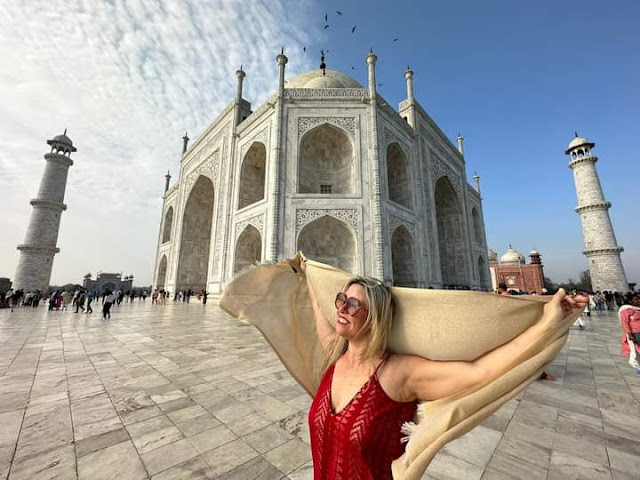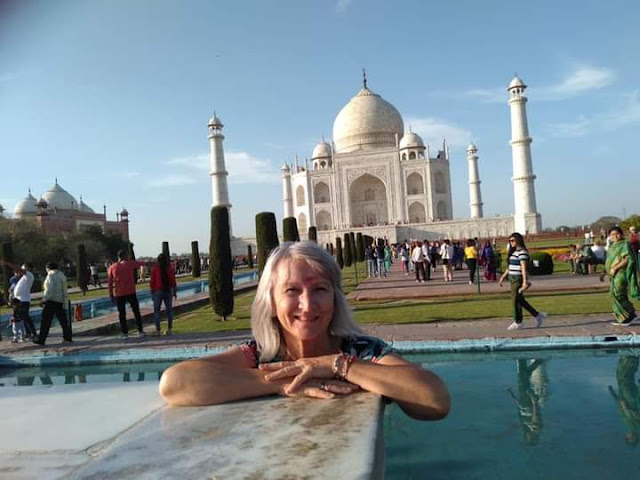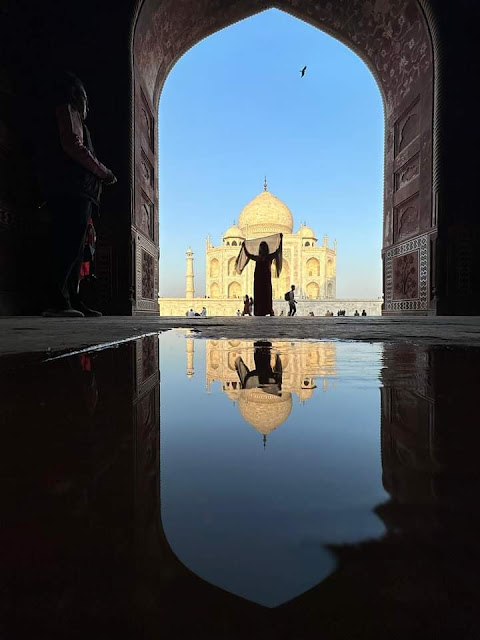Taj Mahal a Story of Love and Romance
Taj Mahal Story of Love and Power
Taj Mahal: A Romantic, Love Story
White ivory columns rise from the ground, forming the central piece: an intricately carved marble dome stands on a square plinth, glazed with arched doorways, and topped by bronze. The moon that reaches up to the sky.
The entire magnificent building overlooks a long reflecting pool, lined with smooth cypresses and fruit trees that are akin to both life and death. This man-made wonder is certainly the breathtaking Taj Mahal, one of UNESCO's New Seven Wonders of the World.
One of India's most beloved poets, Rabindranath Tagore, one"s said the Taj Mahal "a drop of tear on the cheek of time," and the story behind the structure lives up to its reputation.
Contrary to popular belief, the Taj Mahal – located in Agra, Uttar Pradesh, India – is not a temple. Actually it is a tomb. It was built in 1631 by the Mughal emperor Shah Jahan to house the mausoleum of his beloved wife, Arjamand Banu Begum – also known as Mumtaz Mahal – meaning "jewel of the palace", Mumtaz's 14th child. She died while giving birth to Gahwara Begum. Construction began the following year, and the mausoleum was finally completed in 1648, while the magnificent gardens were completed five years later.
Jahan first saw his future wife selling silk and beads in the market place of Agra. History tells that Jahan fell in love at first sight with Mumtaz, a Persian noblewoman. He pursued Mumtaz for five years until he married her in 1612 – making her one of his wives (according to tradition he already had two).
Jahan first saw his future wife selling silk and beads in the market place of Agra. History tells that Jahan fell in love at first sight with Mumtaz, a Persian noblewoman. He pursued Mumtaz for five years until he married her in 1612 – making her one of his wives (according to tradition he already had two).
Mumtaz has been immortalized as a symbol of feminine beauty, but she was also a shrewd political strategist, and was assigned the royal seal, even on the battlefield – while pregnant!
When Mumtaz died of postpartum complications, Jhan was inconsolable and left the royal court in mourning for two whole years. He began planning the construction of the Taj Mahal, the ultimate proof of his love for his favorite wife. He invited Muslim artists and architects from across the country to design a tomb worthy of Mumtaz. In all, 20,000 craftsmen helped build the Taj Mahal and its gardens, as did 1,000 elephants over 22 years.
The Taj Mahal is unique in beauty, incorporating Persian, Ottoman and Islamic art and traditions, and its design was inspired by the Qur'an's description of Paradise. It is also a masterpiece of symbolism. Its bilateral symmetry is dominated by a central axis, an image that has long been used to denote a ruling force that brings balance and harmony. The structure is also aligned in the central north-south direction and the corners are placed in such a way that when one stands in the center one can see the sun rising and setting on the north and south corners during summer and winter. Thanks to the flawless white marble, the building appears to change color depending on the time of day and season, ensuring that the building's surface includes the sky – as well as in the reflecting pool, a sign of presence. The sure way of the Islamic God Allah.
Read: Taj Mahal Story
The Taj Mahal is an architectural masterpiece, and the fact that there is an amazing love story behind its construction means that it will stand the test of time for centuries to come.






.png)
Comments
Post a Comment